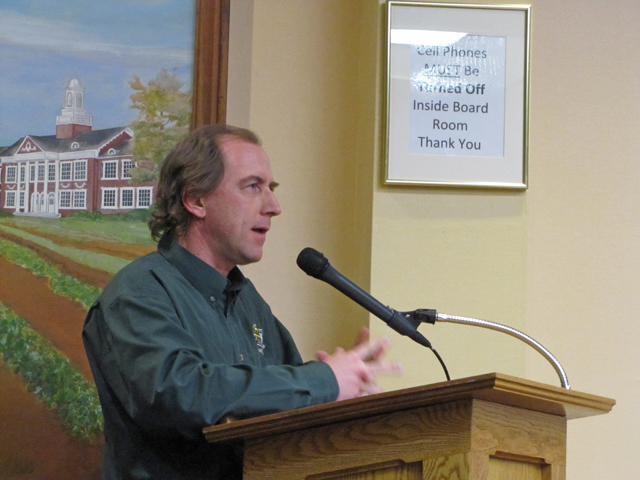Planning Board split on solar farm environmental study requirement


The Riverhead Town Planning Board decided in a split vote Thursday to require an environmental study for the latest Calverton solar farm proposal.
Utah solar company sPower is seeking to build a 20-megawatt solar panel installation on 109 acres at a sod farm located south of Route 25. In 2015, the company built the 9.2-megawatt solar farm on 45 acres on the east side of Edwards Avenue. That project didn’t require an environmental study.
Planning Board chairman Stan Carey said Thursday the environmental study is needed in order to determine how the solar farm will affect the land, as well as its potential impact to the town’s agricultural industry.
In addition, the town has been also dealing with the issue of whether glare from the solar panels will affect aircraft landing at the two runways at Enterprise Park at Calverton.
Mr. Carey added he believes the Planning Board’s decision isn’t a vote against the plan and stressed the vetting process is needed in order to address the town’s environmental concerns.
The board voted in favor of requiring the study by a 3-2 vote. Board members Ed Densieski and Richard O’Dea cast dissenting votes.
“As far as I’m concerned, the community is better served with a solar farm than a sod farm,” Mr. Denieski said.
The amount of taxes and payments in lieu of taxes sPower will make to the town from the proposed solar farm is about $800,000, whereas the taxes and PILOTs the land pays as farmland is only about $6,000, according to sPower representatives.
“It’s not the Planning Board’s job to handle money, but $800,000 can go a long way,” Mr. O’Dea said.
During the public comment portion of the meeting, Long Island Farm Bureau administrative director Rob Carpenter urged the board not to require the study because that process could delay the project by more than nine month and cost as much as $50,000.
Mr. Carpenter added farmland can easily be turned back into farms once the solar panels are removed.
Rick DeLea, whose family owns the sod farm, said the loss of 109 acres won’t hurt the local agriculture industry because he’s already purchased 230 acres less than a mile away and plans to turn it into another sod farm.
Jamesport farmer and former Planning Board member Lyle Wells said that when the town was developing its commercial solar regulations, the town’s agricultural advisory and farmland preservation committees described solar farms as an “ad-hoc” way of preserving farmland.
“There’s very low disturbance of soils and if the solar panels become no longer viable, the land can be converted back to farmland very easily,” he said. “Everyone was in agreement that this was a less expensive way of preserving farmland that purchase of or transfer of development rights.”
Photo: Long Island Farm Bureau administrative director Rob Carpenter addresses the Riverhead Town Planning Board on Thursday. (Credit: Tim Gannon)








